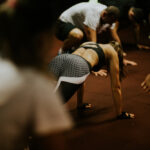Common Cardio Training Mistakes and How to Avoid Them

Losing a little bit of weight may be just what you need to boost your health. According to the CDC, losing just 5–10% of your body weight is enough to improve your blood pressure, as well as your cholesterol and blood sugar levels.
The best way to lose weight is to either reduce your calorie intake or increase the number of calories you burn. You can achieve the latter with cardiovascular exercise and resistance training.
If you are new to working out, though, here’s a word of warning. Some common cardio training mistakes may interfere with your weight loss goals. That’s why we’re bringing you this guide.
Are you starting a new weekly cardio routine to support your journey to a thinner, healthier you? We are here to help. Keep reading this post for everything you need to know about cardio for weight loss.
What Is Cardio?
Cardio is one of the two main types of workouts: aerobic and anaerobic exercise. Both types of exercise are essential for a healthy brain and body. They can also help people who are trying to lose weight.
Anaerobic exercise involves high-intensity movements. These movements work your muscles so hard that you can only sustain them in short bursts. A common type of anaerobic exercise is weight lifting.
Aerobic exercise is also known as cardio. It involves movements and activities that increase your oxygen intake and heart rate. Unlike anaerobic exercise, our bodies can sustain these workouts for lengthier periods.
Types of Cardio Exercises
Any activity that gets your pulse up and lungs pumping counts as cardio. As you can imagine, that means there are tons of activities that count as cardio exercise, including:
- Moderate to high-intensity walking and hiking
- Jogging
- Running
- Cycling
- Swimming
- Rowing
- Dancing
- Jump roping and hula hooping
- Certain sports
- Boxing
- Jumping jacks
- Doing stairs
- Jumping on a trampoline
- Skiing
You can do many of these exercises without any special equipment. But if you prefer hitting the gym, try a cardio-friendly workout machine. The treadmill, stair climber, rowing machine, spin bike, and elliptical are great for cardio.
Can Cardio Help You Achieve Your Weight Loss Goals?
Yes, studies show that aerobic cardio exercise is enough to help men and women lose weight, even without dieting. What is more, aerobic workouts with no anaerobic components are sufficient for weight loss.
For example, one study looked at the effects of cardio on 141 men and women who were overweight. The only lifestyle change the participants made was increasing their cardiovascular exercise. They did not diet or strength train.
After ten months of five cardio sessions per week, the participants lost an average of 4.3–5.7% body mass. The more calories burned per session, the better the weight loss results.
Countless researchers have replicated these results. For example, a recent study of nearly 12,000 people looked at the relationship between obesity risk, resistance exercise, and cardio.
Participants who met all recommended guidelines for resistance exercise and cardio had a significantly lower risk of obesity. These individuals also had smaller waist circumferences than participants who didn’t exercise.
Cardio Training Mistakes to Avoid If You Want to Lose Weight
As you can see, cardio is a highly effective weight loss tool. Yet, many people swear that cardio actually has the opposite effect: weight gain. Why is there so much disagreement about this topic?
One reason is that many people make big mistakes when they start doing cardio. And these mistakes could compromise weight loss. If you want to keep this from happening to you, here are the top mistakes to avoid.
Not Warming Up
Even beginner weight lifters know better than to start their workouts cold. Yet, most people don’t realize that you should warm up before cardio, too. But what exactly is a warmup when it comes to aerobic exercise?
Ideally, a good warm-up should increase blood flow to the muscles you will use during your workout. Better circulation means more oxygen. Oxygen can help boost your performance while also reducing your risk of injury.
So, for example, you might jog or fast walk for 5–10 minutes before running. Dynamic stretching is also an excellent pre-cardio warmup. Learn more about the best dynamic stretches in this article on our blog.
Pre-Workout Fasting
Some people believe that working out on an empty stomach improves weight loss. That is because when we don’t have enough calories in our bloodstream, our body resorts to breaking down stored fat.
Yet, this is only half the truth. Fasted cardio may promote the breakdown of stored fat, but it does not increase the rate of fat oxidation. Fat oxidation occurs when the body burns fat for fuel.
As soon as you stop working out, your body no longer needs the broken-down fat for energy. They return right back to where they came from. But that’s not the only reason we don’t recommend doing fasted cardio.
When you don’t eat enough before aerobic exercise, you may not have enough energy to finish your workout. Focus on lots of carb-rich whole grains and lean proteins to fuel you through your cardio workouts.
Wearing the Wrong Sneakers
This mistake is especially important to avoid if you want to jog or run for weight loss. Wearing ill-fitting sneakers can rub callouses and even cause injury, stalling your progress.
Choosing a good pair of shoes for running is like finding the right romantic partner. You may have to go through a few pairs before you find the right match. For a little help, check out this in-depth guide to picking the right running shoes.
Also, make sure you replace your running shoes frequently. We recommend getting a new pair every 500–600 miles. That way, the soles will continue to absorb shock and make your workout more comfortable and injury-free.
Overdoing It
Doing some cardio may be better than no cardio at all, but the opposite is not true. Doing more cardio is not always better for your weight loss goals. In fact, overdoing aerobic exercise can actually counter your efforts to lose fat.
The negative effects of getting too much cardio include the following:
- Putting too much stress on your joints
- Interfering with your recovery time
- Increasing your appetite for calorie-rich foods
You only need 150–200 minutes of physical activity per week to lose weight. And make sure to factor in daily activities when considering how much cardio you should add to your routine.
For example, say you live a pretty active lifestyle. Maybe you cycle to the gym, work a physically taxing job, and always nix the elevator for the stairs. If that sounds like you, you may be getting enough cardio into your day already.
No Variation
Doing the same cardio workout day in and day out isn’t just boring. It can also lead to workout plateaus or even overuse injuries. That is why we recommend doing different cardio exercises and varying the intensity at which you do them.
As a beginner, stick with steady-state cardio workouts like jogging. Steady-state workouts involve sustained activities for 10–15 minutes. You keep the same exercise intensity throughout.
Once you adjust to this workout style, you can start increasing your workout time and intensity. Aim for 20–90 minutes of steady-state cardio. You can then add high-intensity cardio workouts once or twice a week.
Doing Cardio Only
If you aren’t doing any exercise currently, even the smallest amount of cardio may improve your weight. But if you want to maximize weight loss, make sure to incorporate resistance training, too.
As we mentioned earlier, resistance training is also known as anaerobic exercise. It involves lifting progressively heavier weights to build muscle. Like cardio, this type of workout can support your weight loss goals.
In fact, the benefits of weight training may even outweigh the benefits of cardio for weight loss. Muscles burn a lot of energy, increasing your resting metabolic rate. The resting metabolic rate is how many calories your body burns at rest.
The more muscle you have, the more calories you burn naturally throughout the day. You can eat more and do less cardio while still seeing similar results when you incorporate strength training.
Replacing Calories Burned
It can be tempting to binge after cardio, especially if you track calories burned during your workouts. You may trick your mind into believing that calorie-rich doughnut is fine. After all, you just burned off as much as you’re about to eat!
Yet, the only way to lose fat is to put your body into a calorie deficit. In other words, you have to burn off more calories than you consume. Still, we aren’t saying you shouldn’t fuel your body at all after a workout.
Instead, focus on nutrient-packed, protein-rich ingredients like cottage cheese, eggs, Greek yogurt, chickpeas, quinoa, and oatmeal. Check out more post-workout meal ideas for weight loss at this link.
No Rest Days
You can perform low-intensity cardio every day if you want to. But the second you start increasing the intensity, volume, or duration of your aerobic exercise sessions, you need to make time for rest days.
Rest days are days when you don’t do any significant exercise. You may still get in a mild amount of physical activity. But the goal is to let your muscles recover from intense exercise.
Why are rest days so important? You may recall that we mentioned how muscle building helps with weight loss. But to build muscle, your body needs time to repair the tiny injuries that happen when you exercise intensely.
If you don’t give your body time to rest and repair, you may increase your risk for injury. Your performance may suffer, too. Avoid these issues by incorporating 1–3 days of rest into your weekly cardio routine.
Dehydration
All types of exercise dehydrate you, including cardio. The higher the intensity of the workout and the hotter it is where you exercise, the more water you lose through sweat. Replenishing this water is critical for proper performance.
Yet, dehydration also has an effect on weight loss. When you’re dehydrated, your metabolism slows down, and fat burning decreases. Also, people who are dehydrated often crave calorie-rich foods.
So, maintaining hydration can not only help you feel better and more successful during a cardio session. Drinking more water can also directly support your weight loss journey.
Not Compounding Workouts
If you want to lose weight fast, you may think you should stay in the gym for longer. But that isn’t actually helpful. Instead, focus on maximizing your workout time with compound movements.
Ideally, you should incorporate aerobic and anaerobic exercises into the same workout session. You can do this via supersets or with high-intensity interval training (HIIT).
Supersetting involves moving through strength training workouts without resting. For example, you may do a set of 10 pushups and then immediately switch to lunges. This works your muscles and your cardiovascular system.
HIIT is similar, but the intensity is even higher. Because of the increased intensity, HIIT does incorporate small breaks to catch your breath. HIIT is ideal for fat burning as it increases your metabolism for hours after your workout.
Looking for a Cardio-Friendly Gym Near You?
These cardio training mistakes may be holding you back if you’re trying to slim down. We hope this guide helped you understand why they are mistakes and how to avoid them. That way, you can maximize your results.
Are you searching for a new gym to join? Fitness CF has multiple locations throughout Central Florida. Find a Fitness CF location near you to start your weight loss journey today!







